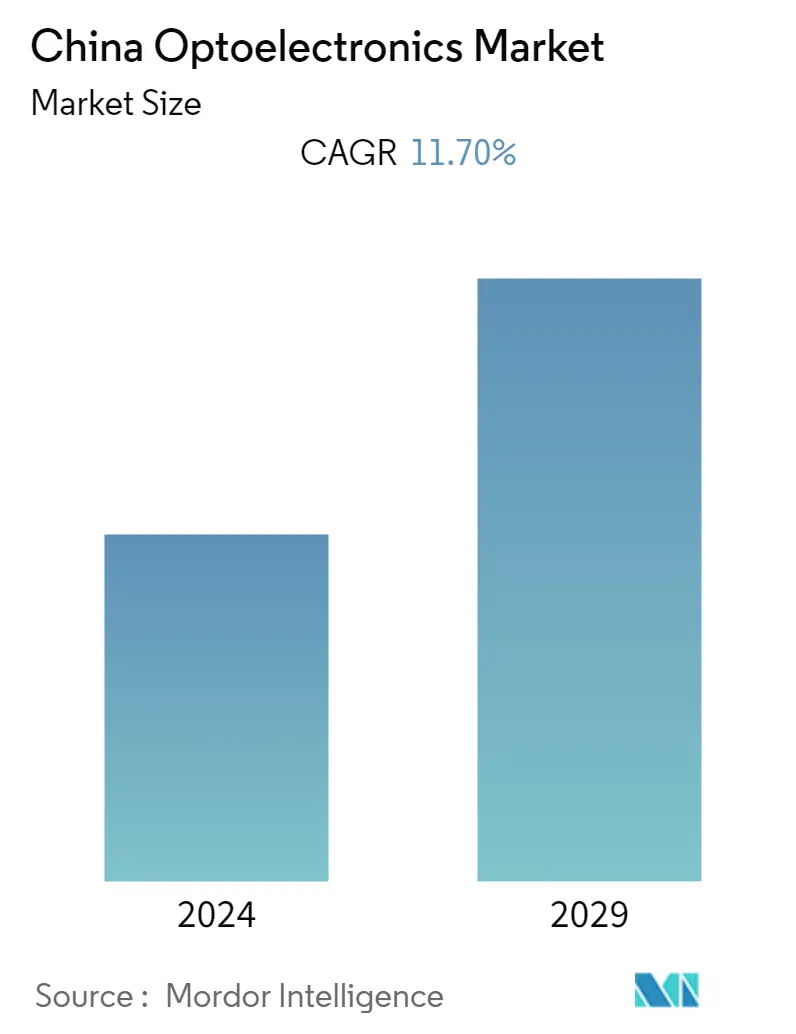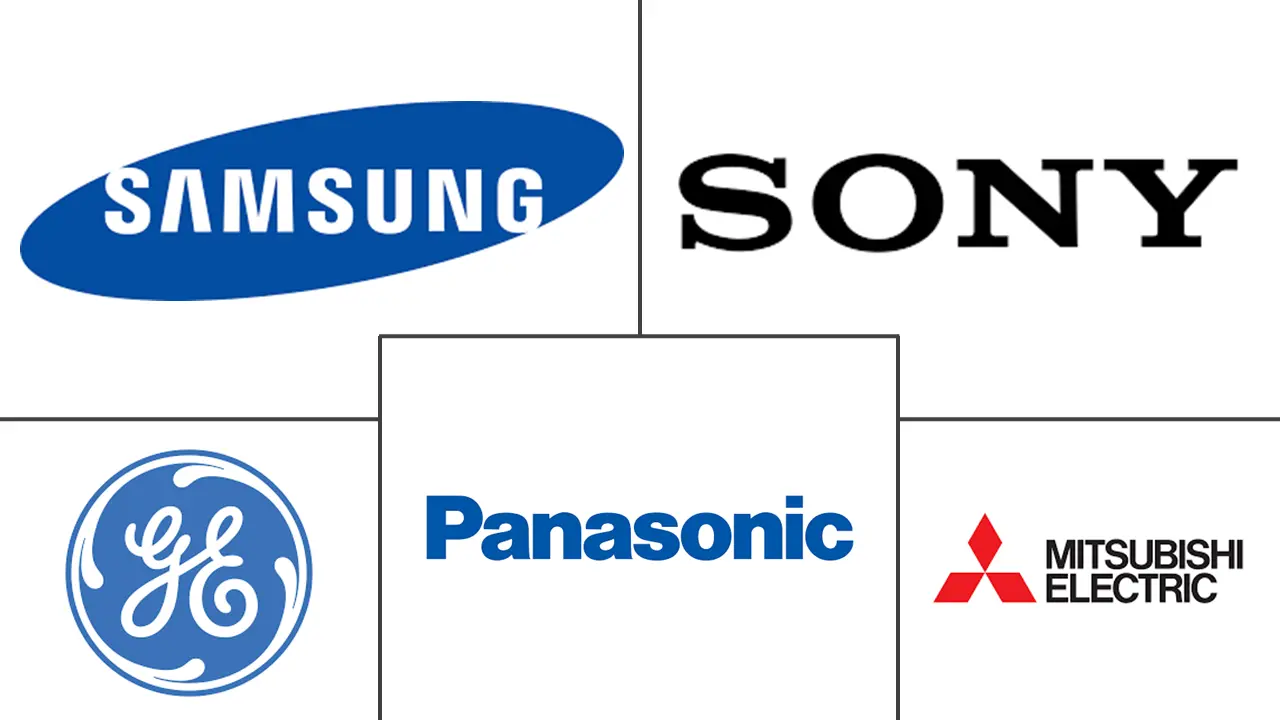Market Size of China Optoelectronics Industry

| Study Period | 2019 - 2029 |
| Base Year For Estimation | 2023 |
| Forecast Data Period | 2024 - 2029 |
| Historical Data Period | 2019 - 2022 |
| CAGR | 11.70 % |
| Market Concentration | Medium |
Major Players
*Disclaimer: Major Players sorted in no particular order |
Need a report that reflects how COVID-19 has impacted this market and its growth?
China Optoelectronics Market Analysis
The China optoelectronics market was valued at USD 12.45 billion and is expected to register a CAGR of 11.7% during the forecast period to become 24.18 billion by the end of the forecast period.
- The rising demand for luxury and ultra-luxury vehicles is expected to fuel the global market during the forecast period. The country's improving economic situation has transformed the overall lifestyle of consumers. With increasing disposable income, consumer demand has shifted along with new lifestyles, resulting in a shift in their tastes. These factors have positively affected the sales of ultra-luxury and luxury cars in the country.
- Optoelectronic is gaining momentum in the healthcare sector. Optoelectronic devices such as cameras, sensors, and detectors are crucial components in medical imaging equipment like endoscopes, ophthalmoscopes, and CT scanners. Optoelectronics can be utilized to create diagnostic tools, such as biosensors that detect specific proteins or other biomarkers. Biosensors can enable remote monitoring of patients and help diagnose diseases such as diabetes, cancer, and infections.
- Optoelectronics can be integrated into wearable devices for continuous health monitoring. Examples include heart rate monitors, blood oxygen sensors, and glucose monitors. Optoelectronics also forms a crucial part of light therapy devices, which use specific wavelengths of light to treat skin conditions such as acne, psoriasis, and eczema. The growing healthcare sector in China is likely to offer a significant boost to the growth of the studied market.
- Optoelectronic light-emitting diodes (LEDs) have a variety of uses in residential settings. LED bulbs and LED strips can be used in various lighting fixtures, including ceiling lights, table lamps, and floor lamps. LEDs are energy-efficient and can save homeowners money on their energy bills. LED lighting can also be used for outdoor applications such as garden lighting and security lighting. LEDs can provide bright, clear illumination for outdoor spaces and are durable enough to withstand harsh weather conditions. The lights can be integrated into smart home systems to provide automated lighting control. This can include motion sensors, timers, and remote control using a smartphone or other device.
- According to the National Bureau of Statistics of China, the output value of construction in China from 2011 to 2022 indicated a progressive growth in the industry. In 2022, the construction output value in China achieved its peak at around CNY 31.2 trillion (USD 4.8 trillion). The growth in construction activities in the region would augment the demand for LED optoelectronics.
- On the flip side, affordable and easily available substitutes for the technology are expected to restrain the growth of the market. Numerous substitutes are available for optoelectronic components. Halogen bulbs are extensively used in interior lighting and headlights. Halogen bulbs are cheaper than OLEDs and LEDs and manufactured easily. Xenon HID bulbs are brighter than halogen and also are used in headlights. LEDs, on the other hand, are both difficult to make and expensive.
- Further, the COVID-19 pandemic shut down a lot of avenues of raw materials and bulk electronic components, leaving electronics manufacturers with half-finished products and idle capacity. As China was ground zero for COVID-19, the shortages started to affect manufacturers worldwide. Component shortages persisted in 2021 also, as many crucial raw materials were in low supply or completely unavailable. The year 2022 also shaped up to be another year indicating a significant impact of COVID-19. Such factors are anticipated to restrain the growth of the studied market.
